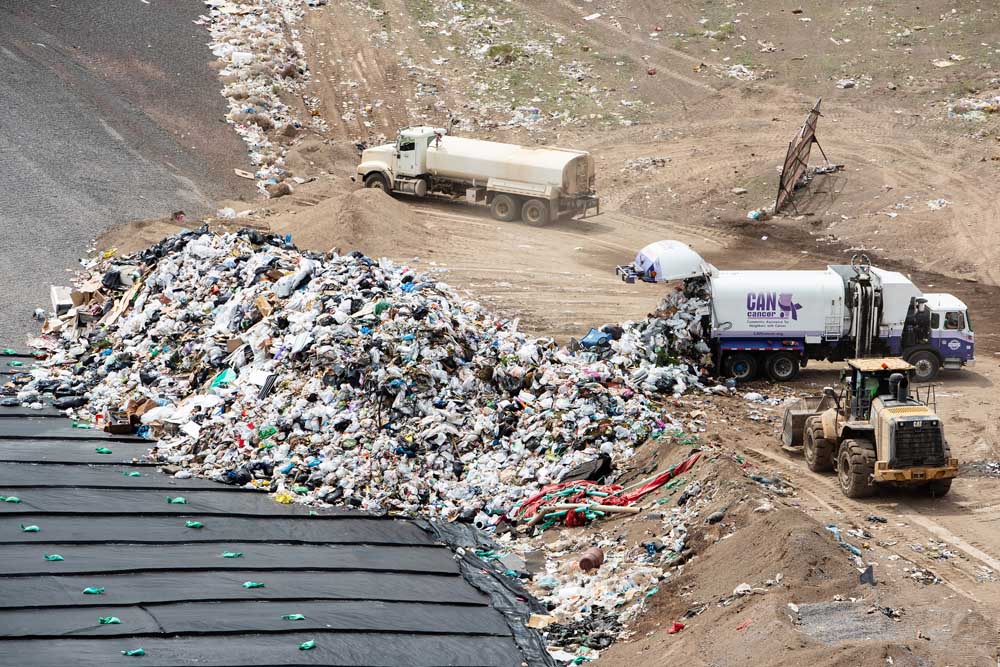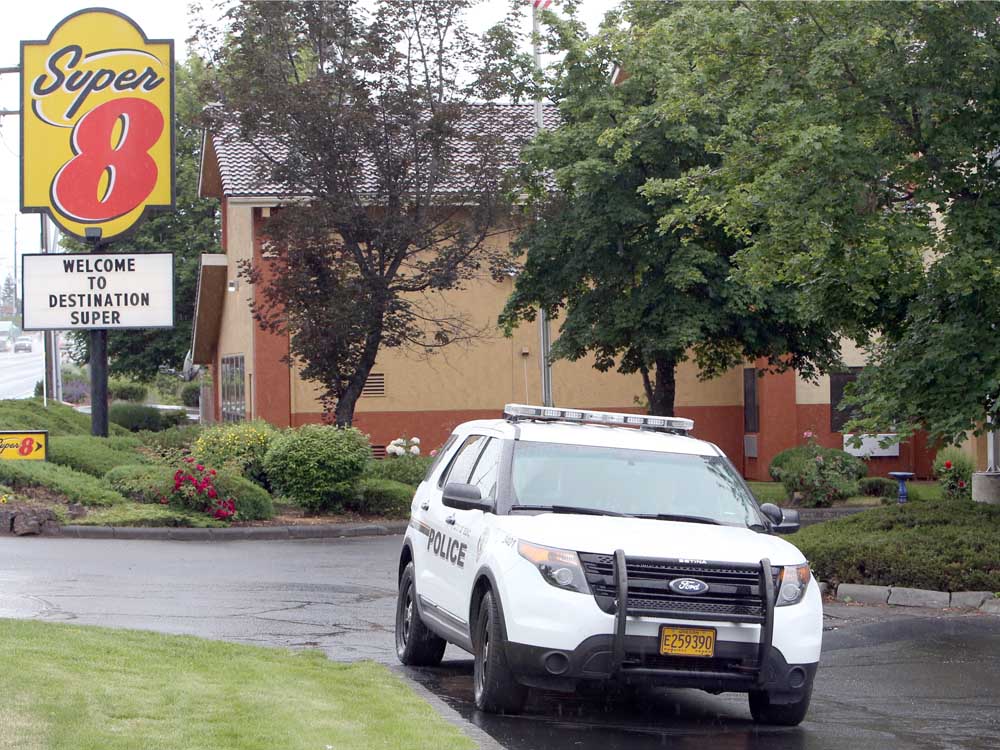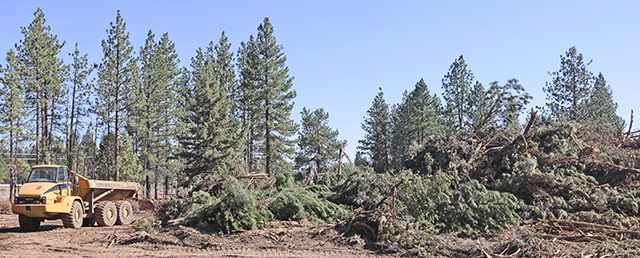With new landfill on the horizon, Deschutes County falls short of trash goals
Published 5:45 am Sunday, June 30, 2024

- A garbage truck dumps trash into a newly opened section of Knott Landfill on Friday in Bend. Tim Brownell, director of the Deschutes County Department of Solid Waste, estimated that part of the landfill would be full in approximately three years.
When Tim Brownell walks past the piles of debris cluttering the concrete floor of the Knott Landfill transfer station, as he did on a recent Friday morning, he sees a future in the discarded items: splintered scrap wood turned to mulch, metal roofing repurposed and heaps of cardboard boxes turned into more cardboard boxes. But it’s a distant future, at best. Currently, none of it will see a second life and instead be buried in the Knott Landfill.
“There’s too much good material currently being wasted,” said Brownell, director of the Deschutes County Department of Solid Waste.
Trending
With the Knott Landfill projected to reach its brim by the end of the decade, the county must select a site for Oregon’s first new landfill in 30 years, which could happen in the next few weeks. But it will take more than a new dump for the county to reach long-standing goals for reusing and recycling, of which current dumping practices fall far short.
From lawn clippings to aluminum cans, Deschutes County produces 620 million pounds of solid waste every year, 452 million pounds of which are buried in the landfill. Since 2001, Deschutes County has had a goal for 45% waste recovery — the portion of waste recycled, composted, or otherwise repurposed. The county last met the 45% goal in 2012, with the rate slowly dropping to 27% in 2022 — 81 million pounds per year short of the target.
Brownell, who has served as director of solid waste for one year, said a mix of factors are to blame: government buffering during the pandemic, the maxing-out of a composting facility, and a surge of debris from proliferating construction sites.
Still, Brownell believes the county can flip that trend.
While waste recovery goals are not enforced by the agency that monitors solid waste, the Oregon Department of Environmental Quality, reaching the goal will be critical for extending the life of a new landfill and mitigating its contributions to greenhouse gas emissions and climate change, Brownell said.
Deschutes County is below the statewide average for reusing waste, but the downward trend is apparent across Oregon. The state is more than 700,000 tons short of its goal, according to a May 2024 report from the state environmental agency.
Trending
In the 2010s, waste production in Deschutes County soared from 354 million pounds to 540 million pounds. By the end of the decade, the average person in the county was throwing away more than 3,000 pounds of stuff each year — 700 pounds more than in 2010. The increase in trash was triple what other counties experienced during that time.
Deschutes County’s 2019 Solid Waste Management Plan launched the process for a new landfill site, which is nearing completion. The Deschutes County Commission is still deliberating over a recommendation for the 440-acre “Moon Pit” located 16 miles Southeast of Bend. The new landfill is expected to last at least 100 years.
Growth in construction debris
Construction and demolition make up close to 40% of the waste in Deschutes County, Brownell said, which is a higher than typical portion.
Even though the county offers to reduce dumping fees for contractors who separate wood and metal to be recycled, it’s often faster and easier to simply put it in the landfill.
A specialized plant called a Materials Recovery Facility would have the ability to sort through and give new life to trailer loads of construction scraps flowing in from construction sites. It could also allow the county to process recycling at Knott Landfill instead of shipping it to Portland.
Before that can happen, the county would need to make sure that people want to buy the new products — such as mulch and wood chips — being produced from old construction debris. The county would also need funding for the facility, which could cost up to $50 million, Brownell said.
Yard waste buried in landfill
Far above where garbage trucks have begun to fill Knott Landfill’s final 700,000-ton cell at the bottom of a gaping gravel pit, front end-loaders toil among rows of dirt piles the size of small hills. Here, at the Knott Landfill compost facility, yard trimmings and food scraps are sent through a grinder, sifted and sorted, then heated and aerated to foster microbes that make healthy soil.
The process produces 48 million pounds of compost per year. But 40% of the yard waste that arrives at the county dump gets thrown into the landfill, not turned into soil.
That’s because the compost yard is too small to handle any further growth. In recent years, oversized piles have become subject to several instances of spontaneous combustion.
A new composting facility could double capacity and prevent 4% to 5% of the county’s overall waste from reaching the landfill. At the same time it could create a better product through more sophisticated technology that speeds up the decomposition process by churning compost for several weeks using a process called concrete slab aeration.
“At the end of it, it’s really good quality dirt,” Brownell said.
Brownell said a new facility could cost $8 million and be located near the county’s new Negus Transfer Station in Redmond, which was recently renovated.
When organic material like food scraps and yard waste are thrown in with the rest of the garbage, they start to produce methane, a potent greenhouse gas. U.S. landfills are accountable for 17% of human methane emissions nationwide, according to the U.S. Environmental Protection Agency. If Oregon can meet its goals for waste recovery, Oregon environmental quality officials estimate a reduction in greenhouse gas emissions equivalent to 500,000 cars on the road for one year.
Deschutes County hopes to turn landfill methane into renewable energy source
While rotting trash isn’t the largest greenhouse culprit in Oregon — that falls to transportation — preventing emissions from landfills is important for curbing climate change, said Mike Riley, executive director of The Environmental Center, a nonprofit in Bend-focused on sustainability and environment.
Riley represents his nonprofit on the Solid Waste Advisory Committee, a Deschutes County body that recommendations on new solid waste facilities. He also serves on the Bend City Council. He’s hopeful the county can reach its goals for reducing trash that goes to the dump — but only with investments in new ways to divert waste.
“We’ve been talking about the need for these kinds of facilities for a decade now. It’s actually time to act and not just keep talking about it,” he said.
Individual responsibility will play an important role, too, Riley said. He’s looking forward to next summer, when changes from Oregon’s 2021 Recycling Modernization Act will come into effect, expanding the list of items eligible for recycling via curbside pickup. The law also requires companies to pay recycling costs for the packaging they produce.
With the new law, improvements to the Negus Transfer Station and siting of the new landfill, the county is in a good position to improve the amount of waste it repurposes , said Phil Chang, Deschutes County commissioner.
Deschutes County makes Negus Transfer station environmentally friendly
County Commissioner Tony Debone said he believes individuals could contribute significantly to recycling goals just by changing their habits.
“It’s just reminding ourselves that that’s the good thing to do,” he said. “There’s a lot of passion for people that want to recycle, but then there’s other folks that are just not focused on it.”
Deschutes County debates future landfill sites amid wilderness, wildlife concerns
Knott landfill transforms dinner leftovers, grass clippings into compost
Could Knott Landfill become Deschutes County’s biggest solar power producer?







